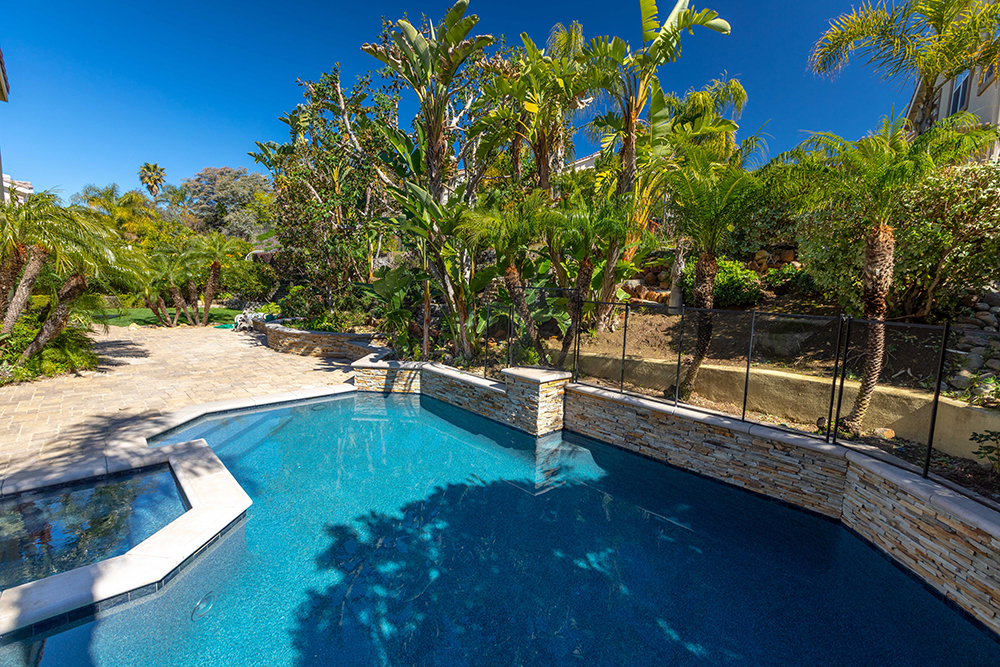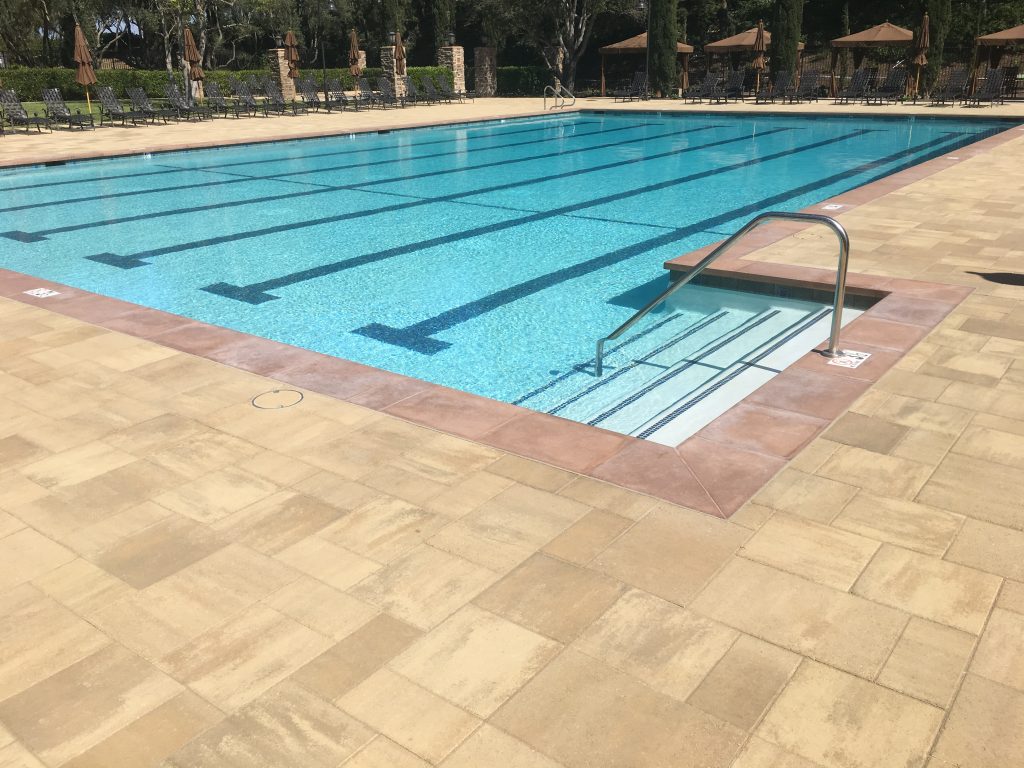
Do we offer a payment schedule?
Yes, payments are typically divided according to the work being completed.
Do we offer pool maintenance services?
No, but we will gladly refer you to someone in your area.
Do we paint pools?
Although it is an inexpensive alternative, paint is a much less durable material and will peel away over time. Also, paint is more sensitive to the water chemistry and an imbalance can result in some chalky/murky looking water.
Do you resurface fiberglass pools?
Alan Smith Pools will only work on in-ground, concrete pools. If you currently have fiberglass over existing pool plaster, we can resurface with new plaster or pebble.
How long does a typical replastering job take?
Most plaster only jobs can be completed within a week (2 weeks including initial water treatment). If the pool tile and coping are being replaced as well, the job can take about 2-3 weeks.
How long does plaster last?
Plaster is made of marble sand, cement and water. Eventually, the cement and marble deteriorate. If properly maintained, white plaster can last 15 years or longer.
How long does quartz last?
Quartz is made of quartz sand, cement and water. Over time, the cement and quartz deteriorate. Quartz is a much harder compound than marble, so white quartz can last 20-30 years or longer if properly maintained.
Is pebble rough?
If properly installed, pebble is not rough. The larger aggregates feel like a wet orange peel. The smaller stones will have less texture than the larger stones.
What are the benefits of upgrading to pebble finish for my pool?
A pebble finish is made of pebbles mixed with cement and water. It is a more durable material that will last you much longer than ordinary plaster, as it is less susceptible to chemical damage the way plaster can sometimes be. Properly installed and maintained, pebble finishes have a lifespan exceeding 20 years or longer.
What do I do about the rust spot in my pool?
First, it would be good to figure out where the rust is coming from. If the rust is from the rebar under the plaster, it would need to be cut out and patched. Most of the time rust spots are caused by an object lying on the plaster. Nails, toys, fertilizer, steel brush bristles, metal shavings, could be the culprits. The two methods for removal I know of are acid and sanding. Acid will remove inorganic stains like rust, but will not touch an organic stain such as leaf or worm stains. Acid or sanding will work on plaster and quartz surfaces, while acid is the only cure for pebble. Acid in a squeeze bottle will work well for reachable areas. In the deeper parts of the pool, a piece of sandpaper on the end of a pole could work.
What is a start-up?
The start up is a very critical process required on all newly plastered swimming pools and spas. New plaster forms calcium carbonate(plaster dust) that must be properly brushed and vacuumed daily for 5-7 days. The start-up also includes a proper balancing of the pool’s alkalinity, PH, and calcium hardness. The duration of the start-up is roughly 5-7 days and we highly recommend hiring our company or another professional to perform the service. The industry term is “Start Up”, but we choose to call it “Initial Water Treatment” because we will not be adding chlorine or sanitizer.
What is the warranty on a newly plastered/finished pool & spas?
10 years for residential and commercial swimming pools. The warranty is on bonding- we guarantee our plaster will not detach, peel, or break. There is also a materials and workmanship warranty.
When do I test for and balance calcium hardness on fresh plaster?
It is always a good idea to know what the calcium level of the fill water is. When starting a straight plaster pool, immediate testing and balancing of the calcium level is critical. If the fill water doesn’t have enough calcium in it (<150ppm) the crème layer could be completely dissolved. Exposed aggregate finishes (quartz and pebble) are less critical due to the fact that the aggressive start-up is used to take the plaster off of the aggregate, and as the plaster dissolves to expose the aggregate, it is increasing the calcium hardness. It is, however, still important to test and balance the calcium level.
Why does my black pebble pool have white areas?
There are two possible answers to this problem. A calcium scale could be covering the black aggregate and plaster causing the light areas, or aggressive water could etch the plaster between the aggregate, pulling the pigment out and becoming lighter. Aggressive water is a general term that could have several reasons to be aggressive. Low calcium hardness, low pH, low alkalinity, and even low temperature could lead to the aggressive water.
Why does my spa tile get more calcium on it than my pool tile, when they share the same water?
This could be caused by a strange phenomenon that is specific to calcium. Calcium is one of the very few elements that actually dissolves more readily in cold water than it does in hot water. If your spa is used frequently, the tile will be exposed to the hot water that will deposit the calcium as a precipitate that sticks to the tile.
Frequently Asked Questions – Contact us for a free estimate






